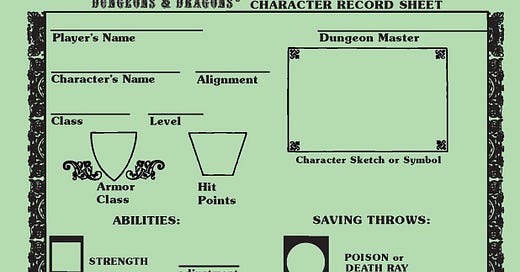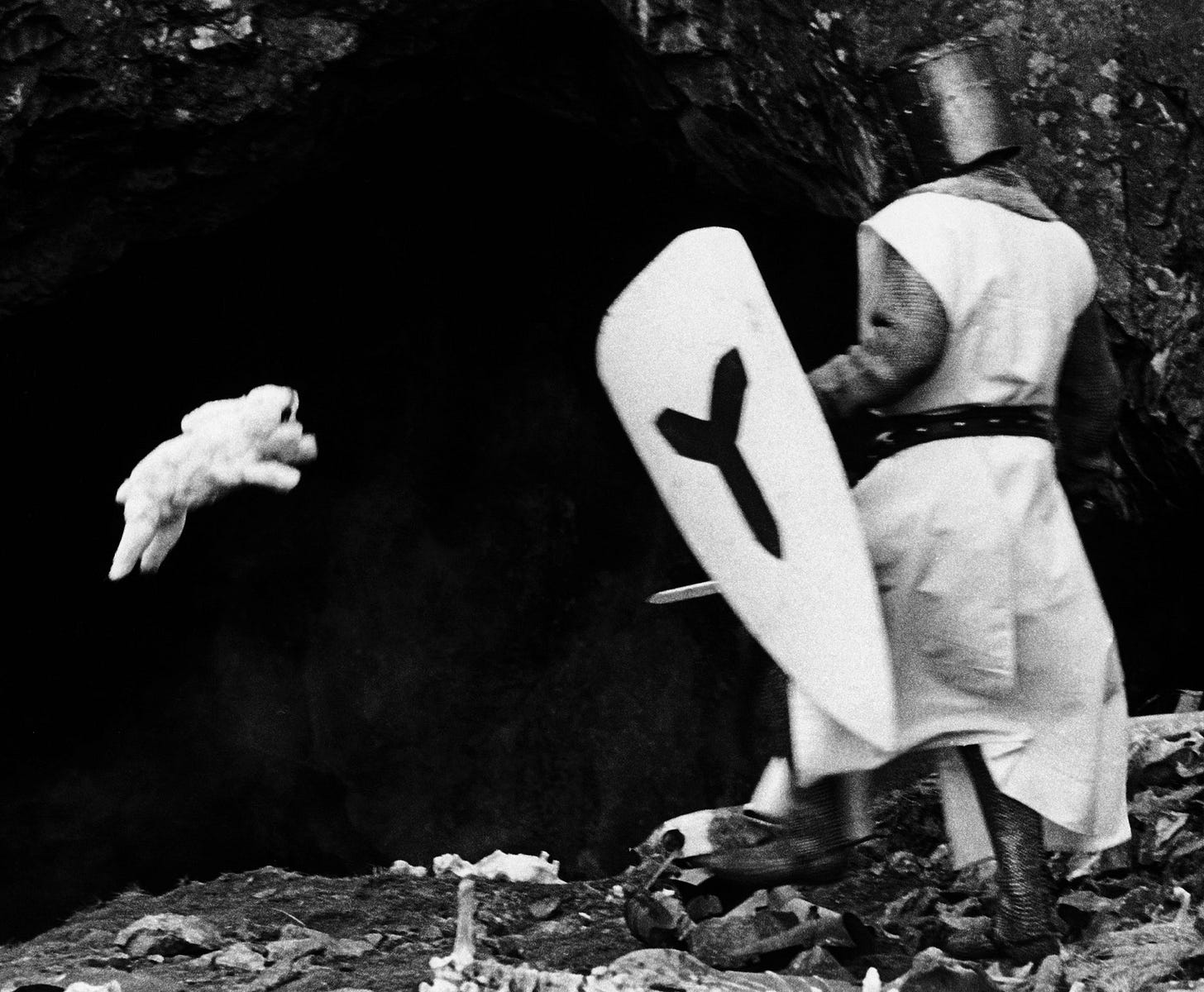Let’s just admit it — Dungeons & Dragons is first ballot.
It was first1 Role Playing Game, spawned a genre, still a massive seller and probably the best seller. Sure (insert other RPG) is important, but D&D spawned a moral panic which provided Tom Hanks his first starring role!
While simultaneously a Saturday morning kid’s TV show! (Take that, Reefer Madness!)
When I played RPGs with my high school friends, my mother would ironically ask “Are ya’ll playing that devil game?” (She apparently developed antibodies against the more ridiculous panics based on her exposure to nuns at an all-girls Catholic boarding school).
Our games were every stereotype about D&D games with teenage boys. Immature, full of bad puns, in-jokes, and Monty Python references. Yes, it would have been cringe worthy in public, but they weren’t. We gamed. We bonded.
Gary Gygax & Dave Arneson’s creation was nearly a decade old when I first encountered it in an arts and crafts store, on a small shelf next to the model airplanes.
Early on, D&D was decidedly uncool. (Those cartoons didn’t help). The 80s equivalents of Vin Diesel and Joe Manganiello might have played it; but if so, they had the good sense to not mention that fact in public. Now people stay up late watching other people play D&D on Twitch2, which sometimes gets them a TV deal. D&D is a lifestyle game. You don’t have to role play to the exclusion of every other game, or watch others play, or buy up every single book and mini, with a customized dice bag … but plenty do just that.
More interesting to me is how D&Ds ‘first mover advantage’ has played out over the half-century since it was published. The early game almost had role playing as an afterthought; not surprising given that D&D spun off from a miniature wargame (Chainmail). You had character statistics, spell lists, carefully mapping out the environment, marching order, checking for traps. Tactics dominated.
Remember to pack your 10’ pole.
For some, that’s enough. The “Old School RPG" movement seems (at least to me, someone who only glances at the occasional review) perfectly content with that. Newer “OSG” games feature better world building, but — apart from the few pages of “What is a role playing game?” introduction — it’s rules and the world.
The Role-playing part of RPGs has always been up to you, too much of a personnel/group decision to warrant more than those few, silly pages.
D&D’s “setting” (before it started publishing world books) was simply “Take all of the best stuff you like from wherever, and yeah, that’s pretty much it.” If you enjoyed something, you could incorporate it yourself, and if enough people enjoyed it, it would appear in a supplement.
“Mediocre artists reference, Great artists steal.”
By that metric TSR looked great, publishing entries to creatures, ideas and places from various mythologies and authors, sometimes with a fig-leaf-hopefully-makes-it-legal change, and others not. (D&D has ‘halflings’ instead of hobbits because Tolkien sued.)
But even before I stumbled upon the box set at the store, RPGs were expanding beyond knights, dragons, dungeons and the medieval world. Sure Tunnels and Trolls appeared quickly, but you also had Bunnies and Burrows, which de-emphasized combat because as RPG author (and friend) Steffan O’Sullivan wrote “You are playing a rabbit, after all — how much combat do you want to do?”
B&B came out a mere two years after D&D; now there are so many RPG flavors (and settings) that it’s impossible to name them all. Some may be worthy of consideration into the 20th Century Project, but which ones? Nowadays (and even in the 20th century) you had rules-lite RPGs, systems tailored to one genre, fantastic worlds, small obscure zines, live action games (both “Interactive Fiction” and “Running around the woods with hopefully fake weapons”).
But those are debates for another day. For today, let us all simply acknowledge the truth.
Dungeons & Dragons was a critical hit.
You could argue history, but Wikipedia’s History of RPGs says “The first commercially available role-playing game, Dungeons & Dragons (D&D), was published in 1974…”
This isn’t throwing shade. I don’t watch other people roleplaying, but I watch plenty of Twitch.






Also on my first ballot of five. Honestly it was time spent with D&D between the ages of 11 - 16 that cemented the urge to be a game player. I was already heavy reader, but the game added to that and opened up fantasy and science fiction as go to genres. I have no desire to role play anymore. I tried it again twenty years ago, but it still holds a bit of a fascination for sure.